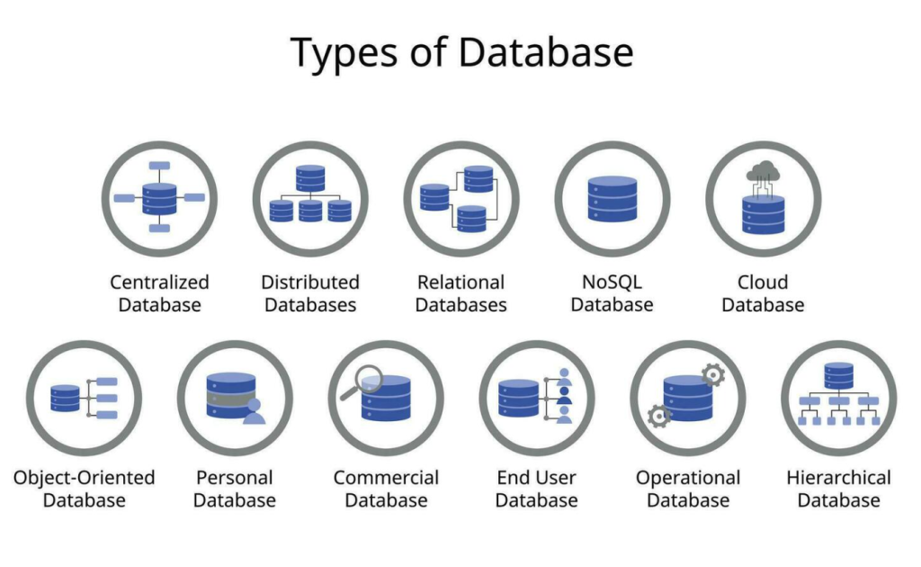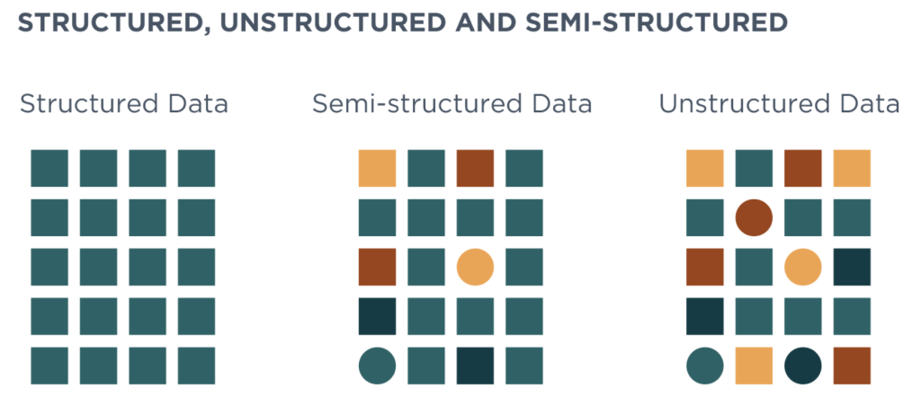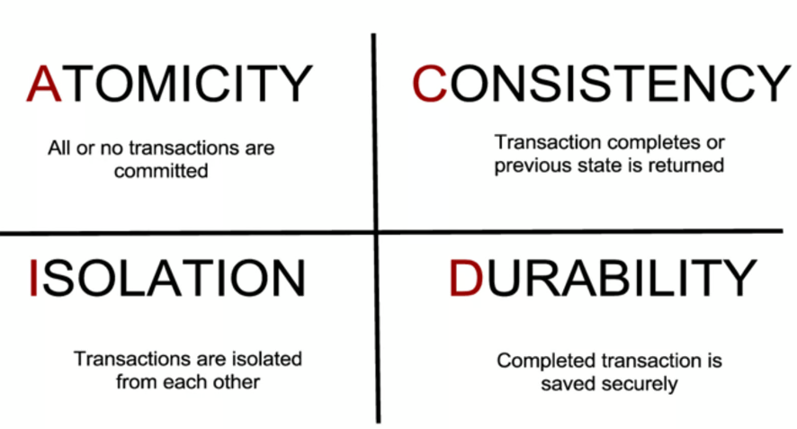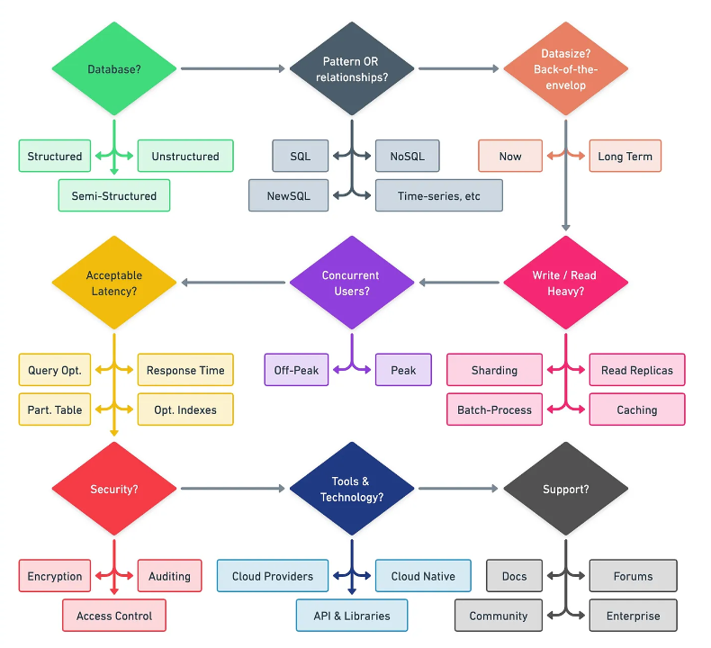Unlocking the Secrets to the Perfect Database Choice
Introduction
In today’s data-driven world, the choice of a database can significantly impact the performance, scalability, and maintainability of your application. With so many types of databases available, selecting the right one can be a daunting task. This guide will help you understand the key factors to consider when choosing a database and provide a framework to make an informed decision.

Key Factors in Choosing a Database
Selecting the right database involves evaluating various factors to ensure it aligns with your application’s needs and goals. Here are the key factors to consider in greater detail:
Data Structure
The type of data your application handles is a critical factor in database selection. Databases can store structured, semi-structured, or unstructured data.
- Structured Data: Organized in a tabular format with rows and columns (e.g., customer information, transactions). If your data fits well into tables with fixed schemas, such as in relational databases (RDBMS), this is your choice. Examples include financial transactions, user records, and inventory systems.
- Semi-Structured Data: Contains organizational properties but not in a rigid tabular format (e.g., JSON, XML). For data like JSON or XML where the structure can vary, document databases (e.g., MongoDB) are more suitable. This is common in content management systems and product catalogs.
- Unstructured Data: Lacks a predefined structure (e.g., text, images, videos). Data like text, images, and videos that lack a predefined format are best stored in databases that can handle blobs or files, such as object-oriented databases or specialized storage systems.

Query Language: Familiarity and Suitability
- SQL: If your team is already proficient in SQL, a relational database might be the best fit due to its widespread use and powerful querying capabilities.
- NoSQL: For more flexible or schema-less designs, NoSQL databases like MongoDB (using BSON) or Cassandra (CQL) can be advantageous. They often come with their own query languages which may have a learning curve but offer powerful ways to interact with data.
Development and Maintenance Costs: Initial Setup and Ongoing Maintenance
- Ease of Setup: Databases like SQLite require minimal setup, making them ideal for small applications or prototypes. In contrast, setting up a distributed database like Cassandra requires significant effort.
- Maintenance Efforts: Consider the complexity of managing the database. Relational databases often require database administrators (DBAs) for performance tuning, backups, and schema management. In contrast, managed cloud databases like Amazon RDS or Firebase can offload much of this burden.
- Learning Curve: Factor in the time required for your team to learn and become proficient with the database. Some databases have extensive documentation and community support that can help mitigate this.
- Scalability Requirements: Consider whether your application needs to scale vertically (adding more resources to a single server) or horizontally (adding more servers to distribute the load).
- Vertical Scaling: Typically supported by relational databases.
- Horizontal Scaling: Often achieved with NoSQL databases, which are designed to scale out across multiple servers.

Ecosystem and Tooling: Available Tools and Community Support
- Tooling: Check if the database has robust tooling for development, monitoring, and management. For example, MySQL and PostgreSQL have mature ecosystems with a wide range of tools and libraries.
- Community and Support: A strong community can provide valuable resources, such as tutorials, forums, and third-party libraries. This can be particularly important for open-source databases like PostgreSQL or MongoDB.
- Integration: Consider how well the database integrates with other tools and platforms you are using. For instance, Elasticsearch integrates well with logging frameworks like Logstash and Kibana.
- Vendor and Licensing: Open Source vs. Proprietary Solutions
- Open Source: Databases like PostgreSQL and MySQL are open source and free to use, with large communities and extensive documentation. However, commercial support is also available if needed.
- Proprietary: Databases like Oracle or Microsoft SQL Server come with licensing costs but often offer advanced features, enterprise support, and guarantees on performance and reliability.
- Cloud-Based: Managed services such as Amazon RDS, Google Cloud SQL, or Azure Cosmos DB provide hassle-free database management with a range of pricing options, scalability, and integration with cloud services.
Transaction Requirements
- ACID Transactions: Required for applications needing strong consistency and reliability (e.g., banking systems). Databases like PostgreSQL and MySQL ensure atomicity, consistency, isolation, and durability, which are crucial for applications requiring reliable transactions, such as financial systems.
- Eventual Consistency: Suitable for applications that can tolerate some data inconsistency for better availability and partition tolerance (e.g., social media feeds). NoSQL databases like Cassandra or DynamoDB provide eventual consistency, which is suitable for applications that can tolerate some delay in data consistency for the sake of higher availability and partition tolerance.

Performance Considerations: Determine if your application is read-heavy, write-heavy, or balanced. Different databases optimize for different workloads.
- Read-Heavy Workloads: Applications like content management systems where data is read frequently but written less often. If your application primarily reads data, databases optimized for read performance (e.g., Elasticsearch) might be suitable.
- Write-Heavy Workloads: Applications like logging systems where data is written frequently. For applications that write data frequently, consider databases optimized for write performance and durability, such as Apache Cassandra or Amazon DynamoDB.
- Balanced Workloads: Applications like social networks where both read and write operations are common. Evaluate the database’s performance in terms of latency (response time for queries) and throughput (number of operations per second).
Consistency, Availability, and Partition Tolerance (CAP Theorem): The CAP theorem states that a distributed database can only provide two of the following three guarantees:
- Consistency: Every read receives the most recent write. Choose a database that provides strong consistency guarantees (e.g., ACID compliance) if your application cannot tolerate stale or inconsistent data.
- Availability: Every request receives a response, even if not the most recent write. For applications where uptime is critical, a database that ensures high availability (e.g., Amazon DynamoDB with multi-region replication) is crucial.
- Partition Tolerance: The system continues to operate despite network partitions. Distributed databases like Cassandra or CockroachDB are designed to handle network partitions and continue operating without data loss.
Storage and Data Volume: Handling Large Data Sets
Large Data Volumes: If you expect to handle large volumes of data, consider databases that can scale horizontally and efficiently manage storage, such as Amazon Redshift for data warehousing or Hadoop for big data processing.
Data Compression and Storage Optimization: Some databases offer advanced data compression and storage optimization techniques, which can be crucial for managing storage costs and improving performance.
Row vs Columnar storage: Row storage is optimized for transactional workloads with frequent writes and reads of entire records, while columnar storage excels in analytical workloads by reading specific columns more efficiently for aggregations.
Use Case Examples
- E-commerce Platform: May use a relational database for transactional data and a document database for product catalogs.
- Real-Time Analytics: Could benefit from an in-memory database for fast data processing.
- Social Network: Might use a graph database to manage and analyze user relationships.

In Conclusion, the Decision-Making Framework can be summarized as

Stay tuned for our upcoming blogs where we explore and dive deep into each type of database, exploring their features, use cases, advantages, and best practices in detail!

